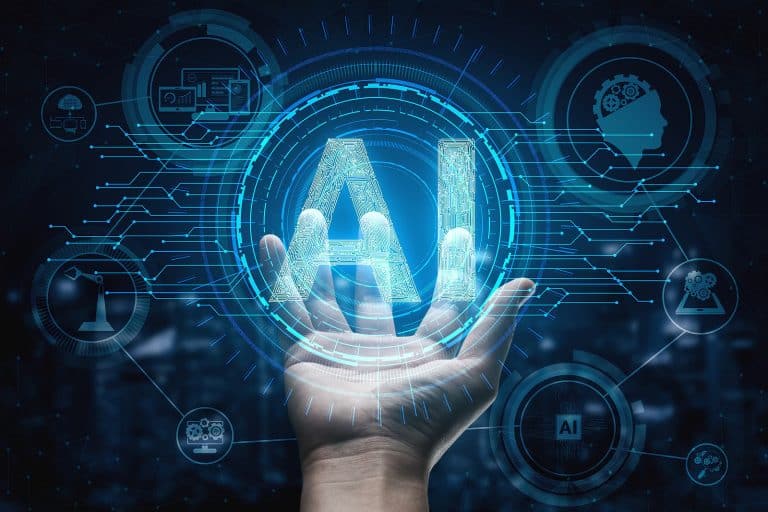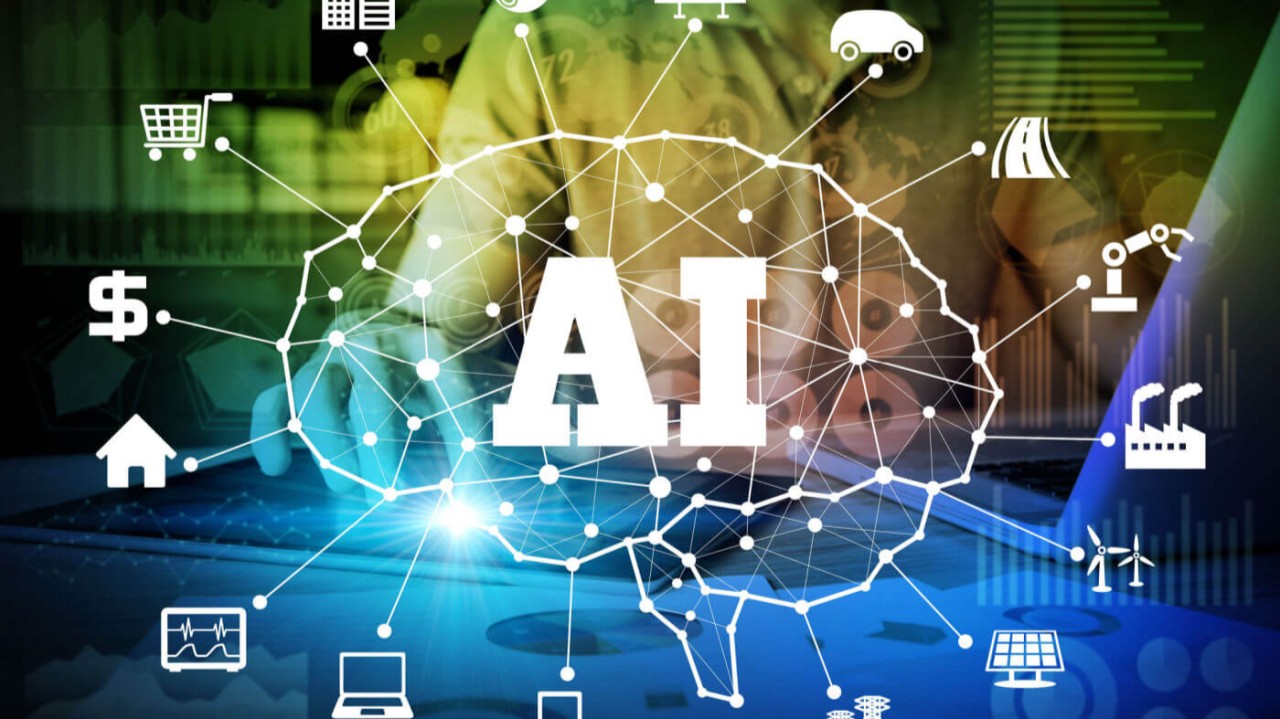The AI boom is no longer just about buzz — it’s about real teams building products that change how businesses, clinicians, creators, and developers work. If you’re an investor, entrepreneur, tech enthusiast, or just curious, this guide walks you through the top AI startups in the U.S. to watch right now: who they are, what they build, why they matter, and how to follow their next moves. Each profile includes quick facts you can cite in a blog post, SEO keywords you can target, and research-backed context from leading universities so readers understand both the tech and the risks.
Quick note on why this list matters: Stanford’s AI Index shows industry-led models and corporate investment continue to accelerate, meaning startups that solve real-world operational problems — data labeling, creative tooling, domain-specific AI, biotech, and developer infrastructure — are receiving outsized attention and capital. Stanford HAI+1
Who made this list — quick selection criteria
I selected startups that (a) have proven traction or high-velocity funding, (b) are advancing distinct pieces of the AI stack (infrastructure, developer tools, model safety, domain-specific ML), and (c) are notable for product partnerships, technical innovation, or rapidly growing adoption. This is not a ranking by valuation — it’s a curated “watch list” focused on impact and momentum.
Table — Snapshot: Top AI Startups to Watch (U.S.)
| Startup | Sector / What they do | HQ | Why watch (one line) | Notable recent signal |
|---|---|---|---|---|
| Anthropic | Safety-first LLMs (Claude family) | San Francisco, CA | Heavy focus on alignment and enterprise Claude models; major funding & partnerships. | Rapid revenue/user growth and global expansion. Wikipedia+1 |
| Perplexity AI | Conversational search / AI answers | San Francisco, CA | Fast-growing AI search engine combining web sources + LLMs. | Big funding rounds and rapid query growth. Wikipedia |
| Runway | Creative generative AI (video & media) | New York / LA | Pioneering text-to-video and content creation tools for creators & studios. | Massive model and product iteration; film festival showcases. Wikipedia |
| Adept | Agentic AI / workplace automation | San Francisco, CA | Building AI agents that interact with software and data to automate workflows. | Significant venture funding and enterprise pilots. PitchBook |
| Scale AI | Data labeling / model evaluation | San Francisco, CA | Core supply chain for ML training data and model evaluation; enterprise footprint. | New product launches for evaluation and safety; major partnerships. Wikipedia |
| SambaNova Systems | AI hardware & systems | Palo Alto, CA | Purpose-built systems for training & inference at scale (chip + stack). | Ongoing product advances tailoring HW for large models. sambanova.ai |
| Vercel | Developer & AI cloud tools | San Francisco, CA | Developer-facing platform expanding into AI Cloud and AI-assisted coding. | Large Series F / AI Cloud expansion. Reuters |
| Jasper | Generative AI for marketing & creatives | Austin, TX | One of the largest commercial content-generation platforms for brands. | Product expansion via acquisitions and enterprise growth. Reuters+1 |
| insitro | AI-driven drug discovery | South San Francisco, CA | Applying ML + biology to accelerate drug discovery and candidate selection. | Heavy biotech partnerships and large funding history. insitro+1 |
| Recursion Pharmaceuticals | AI + automation for drug R&D | Salt Lake City / Multiple | Large-scale biology + imaging platform; commercial-stage biotech using AI. | Strategic M&A and supercomputing investments. Wall Street Journal+1 |
(Each profile below includes a brief explainer, why the company matters, and “what to watch next.”)
1) Anthropic — building safety-centric large language models
What they do: Anthropic develops the Claude family of LLMs with an explicit emphasis on model safety, alignment, and enterprise deployment. Wikipedia
Why they matter: As LLMs scale, the “alignment” problem — getting models to follow human intent safely — is central. Anthropic positions itself as a safety-first alternative and has moved beyond research into enterprise products and partnerships. Their rapid global user adoption and large funding rounds signal both technical credibility and commercial traction. Reuters+1
What to watch next: enterprise partnerships, Claude integrations into SaaS products, and new model releases or safety benchmarks.
SEO keywords: Anthropic Claude, AI safety startups, LLM alignment.
2) Perplexity AI — conversational search that answers, not just links
What they do: Perplexity builds AI-first search and Q&A agents that synthesize web sources into concise answers and citations. Wikipedia
Why they matter: Search is a massive market. Perplexity’s approach — blending retrieval with LLM generation — competes with incumbents by prioritizing direct answers and better source attribution. Rapid product uptake and large funding rounds have elevated Perplexity into the company-to-watch category. Wikipedia
What to watch next: progress on legal/copyright challenges, enterprise search integrations, and scaled query handling.
SEO keywords: Perplexity AI search, best AI search engines, generative search startup.
3) Runway — the creative studio for AI-first media
What they do: Runway provides generative tools for creators, enabling text-to-video, image editing, and multimedia pipelines that integrate into film and content workflows. Wikipedia
Why they matter: Creative industries are an early commercial sweet spot for generative models; Runway’s tools reduce production time and costs and are being adopted in independent and studio-level workflows. Runway’s community and showcase events signal both cultural and technical momentum. Wikipedia
What to watch next: improvements in text-to-video fidelity, enterprise licensing deals with studios, and partnerships with creative software vendors.
SEO keywords: Runway ML video, AI tools for creators, generative video startup.
4) Adept — building AI agents that operate software for you
What they do: Adept focuses on building agentic AIs that can perform multi-step tasks inside software — think “AI copilots” that act inside spreadsheets, CRMs, or coding environments. PitchBook
Why they matter: Productivity gains from agentive AI could be transformational for knowledge work. Adept’s work is important because it moves models from dialog-only assistants to systems that do things — reducing friction, automating workflows, and augmenting employees. PitchBook
What to watch next: enterprise pilots, integrations with major SaaS apps, and safety/usability research for agent behavior.
SEO keywords: Adept AI agents, AI workplace automation, software automation AI.
5) Scale AI — the data backbone for model training and evaluation
What they do: Scale provides data labeling, synthetic data, and evaluation tools that help companies build, test, and align ML models. They also launched evaluation and safety tooling tailored to LLMs. Wikipedia
Why they matter: Models are only as good as their data. Scale occupies a foundational role in the ML supply chain; their tools are used by both startups and large enterprises building production ML systems. Wikipedia
What to watch next: moves into model safety/evaluation, partnerships with cloud vendors, and long-term enterprise contracts.
SEO keywords: Scale AI data labeling, ML training data companies, model evaluation platform.
6) SambaNova Systems — hardware + software for next-gen models
What they do: SambaNova builds integrated AI systems (hardware + stack) optimized for training and deploying large models. sambanova.ai
Why they matter: As model scale rises, custom systems that reduce cost and energy per operation become strategic assets. SambaNova’s stack targets performance and efficiency, which matters for organizations training big models. sambanova.ai
What to watch next: new system launches, large-scale customer deployments, and benchmarks against hyperscaler stacks.
SEO keywords: SambaNova AI chips, AI hardware startups, efficient training systems.
7) Vercel — AI for developers and the edge
What they do: Vercel is a developer platform best known for Next.js; recently it has expanded into AI Cloud services and AI-assisted development workflows. Reuters+1
Why they matter: Developer-first platforms that bake in AI can accelerate application development and democratize model deployment — Vercel’s large developer base gives it a potential distribution advantage for AI-first apps. Their recent fundraising and AI product focus mark their transition from infrastructure to AI-enabled developer tooling. Reuters
What to watch next: rollout of AI Cloud features, generative coding agents, and enterprise adoption.
SEO keywords: Vercel AI Cloud, AI developer platforms, generative coding tools.
8) Jasper — AI-first content and marketing at scale
What they do: Jasper offers generative copy and creative tooling for marketing teams, helping automate content creation at scale. Latka+1
Why they matter: Marketing is a high-value vertical where quality, speed, and brand consistency are critical — Jasper’s traction shows generative tools can be monetized in enterprise contexts. Acquisitions and product expansions point to growth. Reuters
What to watch next: enterprise integrations, creative quality metrics, and international expansion.
SEO keywords: Jasper AI marketing, AI content tools, generative marketing platform.
9) insitro — ML meets biology for drug discovery
What they do: insitro combines machine learning with high-throughput biology to speed up drug discovery and identify promising therapeutic candidates. insitro
Why they matter: Drug R&D is costly and slow; ML-driven platforms that improve candidate selection could reshape pharma economics. insitro’s partnerships with big pharma and continued funding highlight commercial progress. Tracxn
What to watch next: pipeline progress, clinical milestones, and new collaborations.
SEO keywords: insitro drug discovery AI, AI biotech startups, ML for pharma.
10) Recursion Pharmaceuticals — scaling biology with automation + ML
What they do: Recursion integrates automated biology labs, imaging, and machine learning to discover and develop therapeutics at scale. ir.recursion.com+1
Why they matter: Recursion is a commercial-stage example of AI applied to life sciences at scale, with investments in compute infrastructure and M&A to deepen capabilities. Their moves illustrate how AI companies in biotech transition from platform to product companies. Wall Street Journal
What to watch next: clinical progress for pipeline candidates, strategic deals, and compute investments.
SEO keywords: Recursion Pharmaceuticals AI, AI in drug discovery, biotech AI startups.
What the universities and research say about this moment
- Industry is driving model releases and investment. Stanford’s AI Index documents that industry-produced models account for a growing share of frontier models and that corporate investment in AI remains huge — a reminder that well-funded startups can move fast but also face high expectations. Stanford HAI+1
- Generative AI has practical productivity gains — but also limits. Research from MIT and MIT Sloan highlights that generative AI can increase productivity (particularly for less experienced workers) but also warns about gaps in world knowledge, environmental costs of training big models, and project failure rates when business integration is poor. These findings are useful when evaluating startups’ claims — look for measurable business outcomes and responsible scaling plans. MIT News+2MIT News+2
- Data and evaluation are central. Academic and industry work stresses robust evaluation and safety testing (areas where companies like Scale AI and Anthropic focus). If a startup lacks rigorous evaluation or explainability practices, that’s a risk signal. Stanford HAI+1
How to track and evaluate AI startups (actionable checklist)
If you want to follow or evaluate AI startups, these practical signals separate the overhyped from the promising:
- Customer traction over demos. Are real customers paying? Are deployments producing measurable outcomes?
- Data access and quality. For model-driven startups, access to good, proprietary data is a moat (or a red flag if missing).
- Compute strategy & cost-awareness. How will the startup afford model training and inference at scale? Hardware partners or optimized stacks are important. sambanova.ai+1
- Regulatory & IP risk. Legal disputes over data usage or content scraping can sap momentum — watch for lawsuits or regulatory scrutiny. Wikipedia
- Research & evaluation practices. Public model cards, benchmarks, or third-party audits indicate scientific rigor. Stanford HAI
- Founder track record & team depth. Teams with prior domain experience in the target industry tend to execute better.
Table — Quick signals to watch (for each startup)
| Signal | Why it matters |
|---|---|
| Paying customers / ARR growth | Indicates product-market fit and revenue traction |
| Strategic partnerships (cloud, enterprise) | Provides distribution and scale advantages |
| Public safety/evaluation docs | Shows commitment to robustness & trust |
| Legal or IP actions | Can indicate business-model risk or aggressive scraping |
| Talent hiring & retention | Momentum and ability to deliver on product roadmap |
FAQs — What readers actually ask
Q: Are these startups safe investments right now?
A: “Safe” is relative. Many startups on this list have strong funding and traction, but AI markets are cyclical. Evaluate each company on customer revenue, defensible data, and pathway to profitability. Stanford’s AI Index shows high investment but also rapid change — diversify and dig into fundamentals. Stanford HAI
Q: Which AI vertical is growing fastest?
A: Infrastructure (data, evaluation, hardware), developer tools, generative media, and biotech/machine-learning drug discovery are high-growth verticals. Academic reports highlight rapid adoption of models in industry and strong private investment into these areas. Stanford HAI+1
Q: How do I follow company updates without bias?
A: Use a mix of primary sources (company blogs, press releases), reputable outlets (Reuters, Bloomberg, TechCrunch), and neutral trackers (Stanford AI Index, PitchBook summaries). Watch for third-party audits and customer case studies. Stanford HAI+1
Q: Will model safety and regulation slow down startups?
A: Regulation and safety expectations raise compliance costs but also create opportunities for startups that build trustworthy, auditable systems (e.g., those focused on alignment, evaluation, or enterprise safety tooling). Expect more scrutiny and clearer standards in the next 12–24 months. Wikipedia+1
Q: How can creators and small businesses benefit from these startups?
A: Creative tools (Runway, Jasper), search/insight tools (Perplexity), and developer platforms (Vercel, Adept) can lower cost and time-to-market. Try free tiers, pilot projects, or agency partnerships to test ROI before committing to enterprise contracts.



